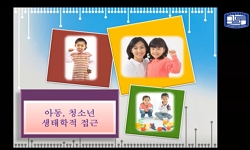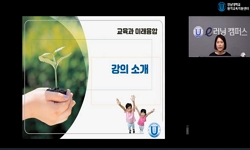The present study was performed to identify the socio-psychiatric aspects of adolescent criminal offences reported on daily newspapers and to use them as basic materials for prevention of adolescent criminal offences. The author analysed 609 cases of ...
http://chineseinput.net/에서 pinyin(병음)방식으로 중국어를 변환할 수 있습니다.
변환된 중국어를 복사하여 사용하시면 됩니다.
- 中文 을 입력하시려면 zhongwen을 입력하시고 space를누르시면됩니다.
- 北京 을 입력하시려면 beijing을 입력하시고 space를 누르시면 됩니다.
청소년 범죄 기사 내용 분석 = An analysis on the newspaper articles related to adolescent criminal offences in Korea
한글로보기https://www.riss.kr/link?id=A30057627
- 저자
- 발행기관
- 학술지명
- 권호사항
-
발행연도
1997
-
작성언어
Korean
- 주제어
-
KDC
510
-
자료형태
학술저널
-
수록면
293-322(30쪽)
- 제공처
-
0
상세조회 -
0
다운로드
부가정보
다국어 초록 (Multilingual Abstract)
The present study was performed to identify the socio-psychiatric aspects of adolescent criminal offences reported on daily newspapers and to use them as basic materials for prevention of adolescent criminal offences. The author analysed 609 cases of adolescent criminal offence who reported on Dong-a Ilbo and Chung-Cheong Ilbo, from 1991 to 1995. The total numbers of cases were 609, including 573 males and 36 females. In data analysis, the subjects were devided into three subgroups as the student group(221 cases), the working group(70 cases), and the jobless group (318 cases). and the result of the study were as follows.
1. The cases of adolescent criminal offences were more common in male. Their mean ages were the youngest in the student in contrast to late subgroup of the working or the jobless.
2. The antisocial personality was the most common in the jobless, while the dramatic cluster including the borderline or masochistic personality was more prevalent in the working, and the anxious cluster was more in the student. In psycho-social stressors, the student was suffered from various stress in school, home and their social life, while the working showed more serious stress in their hetero-sexual and business life, or more experienced maladjustment in their social and job life, and the jobless group showed more stressful burden due to economical problems, or more experienced maladjustment in their family life.
3. In subtypes of criminal offences, violence, fatal assult, fatal injury, parricide, and their or group offences were more common in the student, while murder, rape and raising the penalty or solitary offences were more frequently observed in the working, and felony was the most prominent offence in the jobless.
4. The incidence of student's offences reported in daily newspapers was remarkably increased, while those of the working or the jobless were decreased. The most vulnerable time of criminal offence in adolescents was from 7-12 PM, and these trends were prominent in the jobless compared with the student in afternoon, and the working in midnight.
5. In motivation of crimes, the psychological conflicts were the most in the student, while the curiosity, the various personality problems, and the heterosexual conflicts were common in the working, and the economical problems or the absence of motivations were prominent in the jobless.
6. In the tools of crime, the sharp materials were the most ones in the student compared with the fists, knives or guns in the working, and the absence of tools in the jobless. In the methods of crime, the latent aggression or physical aggression were the most ones in the student, compared with the forced aggression or direct aggression in the working.
7. In terms of accompanied person participating in criminal offence, group offence was prevalent(60.9%). The numbers of accompanied persons were more than 4 persons in the student, compared with the 2 persons in the working group, and the 1 person in the jobless. In the age ranges of accompanied persons, the student showed the youngest, while the jobless showed the oldest ones.
8. Males(63.2%) were more common in victims of adolescent criminal offences, about 40% of victims was the absence of job, and adults older than 21 years old(34.6%) was the most prevalent, followed by children younger than 11 years old(21.8%). Most of the victims in the student were their friends, lovers or parent with minor injury, while those in the working were passengers with more serious injury. The 67.8% of abusers was unknown persons with victims, and these trends were prominent in the jobless compared with more known persons in the student.
9. In the characteristics of the abuser, the working used more various psychoactive substances or alcohols, and more frequently experienced hallucination or delusion at the time of criminal offence compared with the other groups.
동일학술지(권/호) 다른 논문
-
우리나라에서 호흡기계 질환의 역학조사에 사용되는 설문지의 신뢰도 비교
- 중앙대학교 의과대학 의과학연구소
- 고재춘
- 1997
-
- 중앙대학교 의과대학 의과학연구소
- 신도식
- 1997
-
혈소판제제의 저장기간에 따른 cytokine 변화와 수혈자 호중구 respiratory burst에 미치는 영향
- 중앙대학교 의과대학 의과학연구소
- 임영애
- 1997
-
악성 흉막삼출 환자에서 활석분무 흉막유착술의 방사선학적 평가
- 중앙대학교 의과대학 의과학연구소
- 김양수
- 1997




 RISS
RISS





